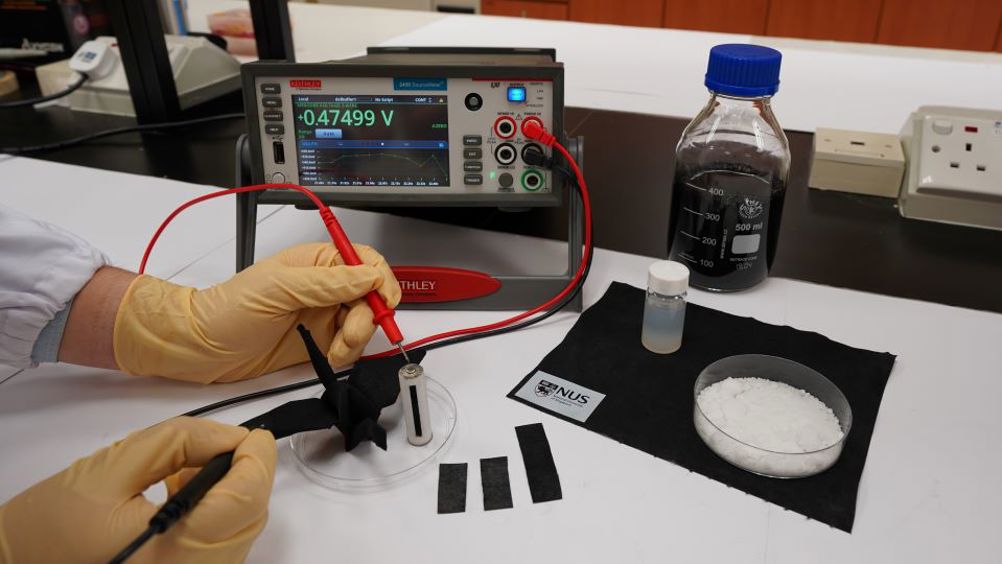NUS team creates device that generates electricity from air moisture
Researchers from the National University of Singapore have developed a new moisture-driven electricity generation device made of a thin layer of fabric, sea salt, carbon ink, and a special water-absorbing gel.

According to NUS, moisture-driven electricity generation (MEG) has received interest due to its potential in applications including wearable electronics, electronic skin sensors, and information storage devices.
Key challenges of current MEG technologies include water saturation when exposed to ambient humidity and unsatisfactory electrical performance.
To overcome these challenges, a research team led by Assistant Professor Tan Swee Ching from the Department of Materials Science and Engineering devised a novel MEG device containing two regions of different properties to continuously maintain a difference in water content across the regions to generate electricity and allow for electrical output for hundreds of hours.
Findings from the team at NUS’ College of Design and Engineering (CDE) were published in Advanced Materials in May 2022.
The MEG device consists of a thin layer of fabric (about 0.3mm thick) coated with carbon nanoparticles. In their study, the team used a commercially available fabric made of wood pulp and polyester.
Register now to continue reading
Thanks for visiting The Engineer. You’ve now reached your monthly limit of news stories. Register for free to unlock unlimited access to all of our news coverage, as well as premium content including opinion, in-depth features and special reports.
Benefits of registering
-
In-depth insights and coverage of key emerging trends
-
Unrestricted access to special reports throughout the year
-
Daily technology news delivered straight to your inbox










Water Sector Talent Exodus Could Cripple The Sector
Maybe if things are essential for the running of a country and we want to pay a fair price we should be running these utilities on a not for profit...